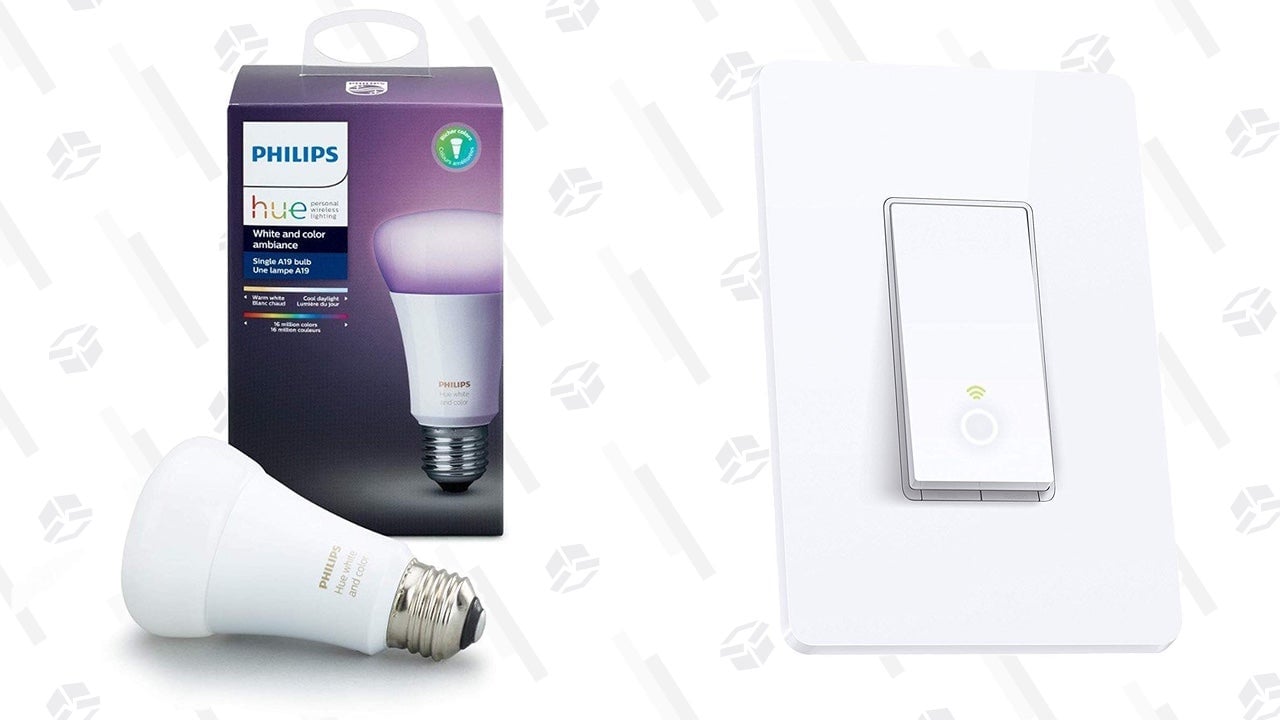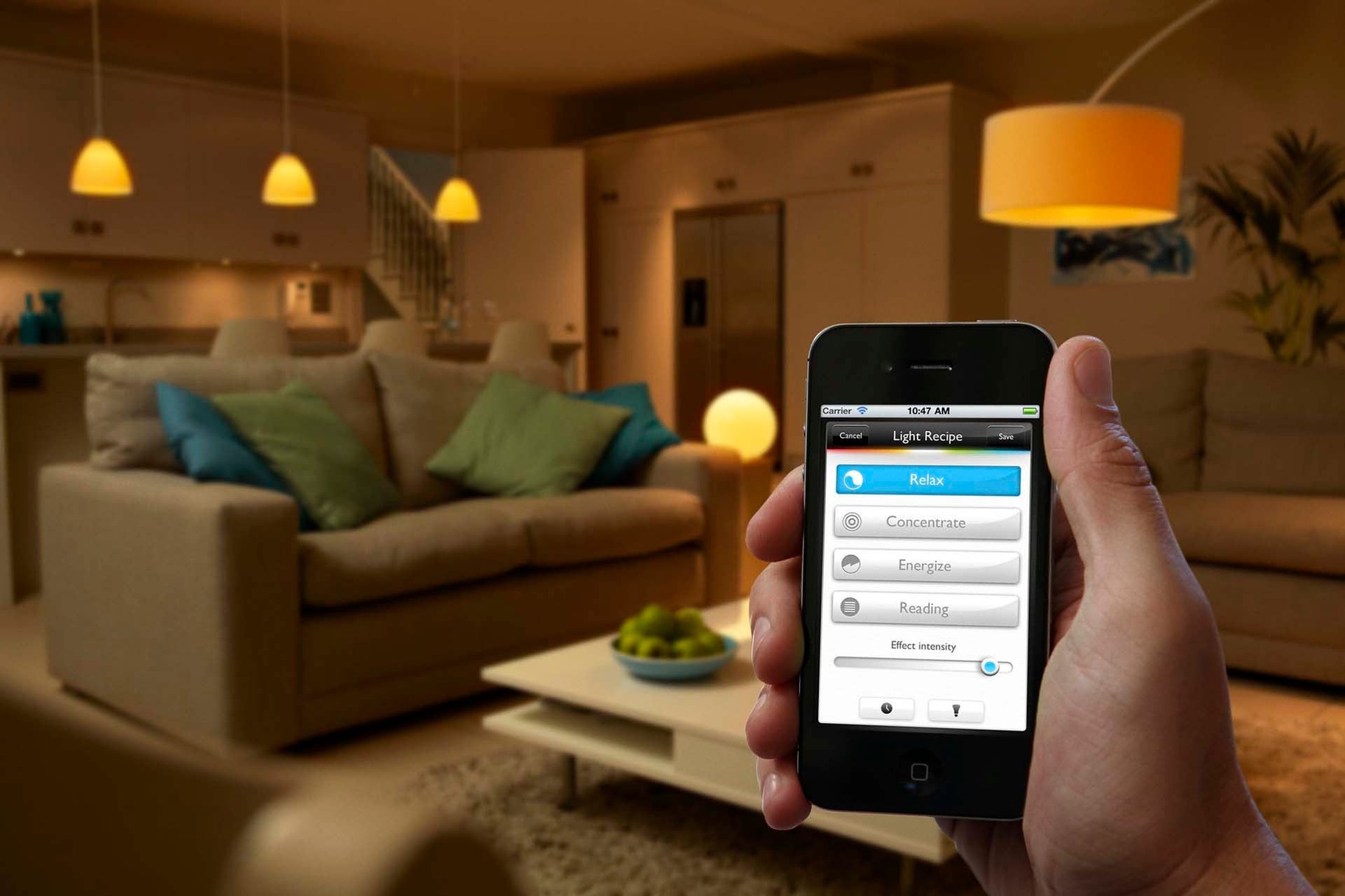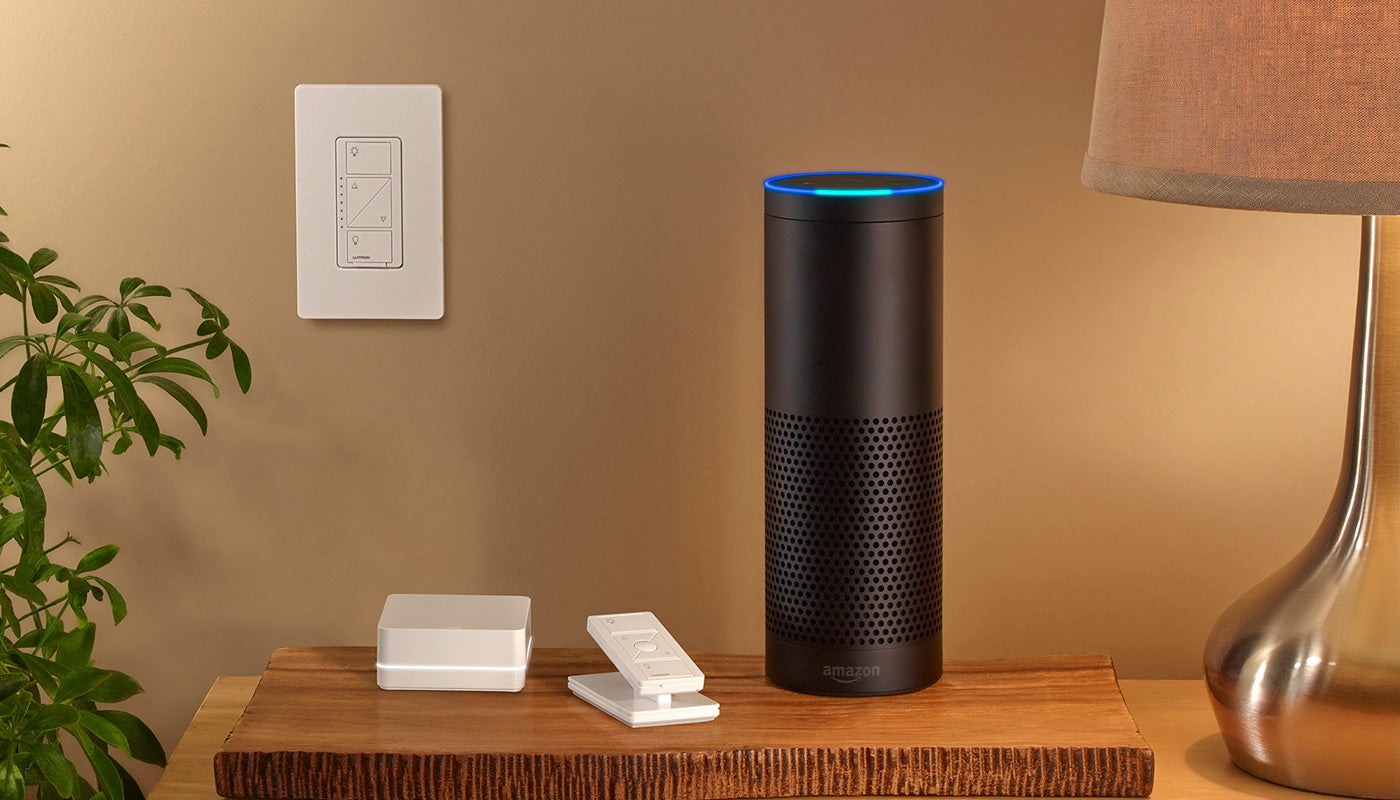Should You Buy Smart Light Bulbs or Smart Light Switches?
So you’re finally dipping your toe into the smart home pool, and you’re looking for some gadgets to get you started. Smart lights are one of the most popular devices for beginners, but it’s easy to get overwhelmed with all your options. Before you even decide on a product, though, you have to make a crucial decision: should you get smart bulbs, or smart switches?

So you’re finally dipping your toe into the smart home pool, and you’re looking for some gadgets to get you started. Smart lights are one of the most popular devices for beginners, but it’s easy to get overwhelmed with all your options. Before you even decide on a product, though, you have to make a crucial decision: should you get smart bulbs, or smart switches?
Suggested Reading

Smart bulbs like Philips Hue have gotten the most mainstream attention, so let’s start there. Bulbs have a few main advantages: they’re super easy to install (even for the most novice of DIYers), and many come with extra features that can be pretty handy. For example, while I don’t particularly care about throwing colorful raves in my living room, I still like Philips’ Hue Color and Hue White Ambiance bulbs for their ability to change color temperature—so I can have a bright, sunlight-esque tone during the day, and a dim, reddish hue at night that’s gentler on the eyes. This is especially nice if your home doesn’t get a lot of direct sunlight—that whiter color temperature can really brighten up an otherwise dim room.
Related Content
Other brands come with interesting features of their own. Sengled’s Pulse line builds a small speaker into each bulb, so you can get whole-house audio without putting speakers on your tables (or in the ceiling)—just don’t expect the sound quality to be as good as a dedicated system. There are bulbs with bulit-in motion sensors and security cameras, too. Again, you’re probably best off with dedicated devices for each of these features, but hey—they exist.
Just make sure you research which kind of bulbs you need before you buy. If some of your rooms have recessed lights or candelabra bulbs, for example, you’ll be much more limited by which brand you go with, since cheaper brands like Sengled or LIFX don’t have as wide a variety as Philips Hue does (though they are slowly expanding).
There is one main downside to smart bulbs: they’re kind of confusing to turn on and off, particularly for visitors and tech-unsavvy housemates. You can turn them on and off through the app, or with a voice assistant like Alexa or Google, but if you flip the light switch, you’ll kill power to the bulbs entirely, and you won’t be able to turn them back on with the app or voice assistant until you flip the switch back on. That’s why I also recommend Philips’ Smart Dimmer Switch—which is a battery powered set of buttons you stick on the wall—coupled with some light switch covers, so no one accidentally kills the power to your lights. It’s not the most elegant solution, and there are some new products like the RunLessWire kinetic switch or the Lutron Aurora that aim to do it a little better, but they may still be clunky for some users, and are only built for Philips Hue lights. You can see why some people are (ahem) turned off by this type of setup.

If all that sounds a little too complicated, smart switches may be the answer to your prayers. Instead of replacing every bulb in your house, you can just replace your light switches with network-connected versions. Lutron’s Caseta line is feature-rich and uses its own proprietary communication standard, while Belkin’s Wemo line uses Wi-Fi so you don’t need a hub. Some people also prefer generic Z-Wave switches, which require a hub, but use a more open standard.
This solves the confusing switch problem: the light switches on your wall work normally, but you can also control the lights with an app, Alexa, or Google Home (which trigger power at the switch level, rather than at the bulb level). Plus, depending on how many light fixtures you have, switches could be cheaper when all is said and done—more on that in a moment.
Switches also work with any light fixture, which is great when you can’t find smart bulbs in the right size or shape. If you have a house full of non-standard recessed lights, for example, smart switches are going to be a lot easier and cheaper than switching to smart bulbs.
Of course, there are downsides to switches as well. They aren’t quite as easy to install, and while you could totally do it yourself, some people may be uncomfortable working with their home’s electrical wiring, necessitating a professional electrician. Furthermore, some of the non-Lutron switches have limitations—like requiring a neutral wire—which may not work in some older homes. Others present challenges for rooms with three-way switches. And if you aren’t familiar with these concepts, researching compatible products can be a bit of a headache.
Still, if you don’t need features like color-changing lights, and you’re willing to put up with a bit more up-front hassle, switches can be a much cleaner way to smarten up your lighting.
Ultimately, for many people, the decision may come down to cost. While a single smart switch is more expensive than a single smart bulb, the bulbs can add up very quickly if you have a lot of fixtures in each room. So go through your house and count out the number of bulbs you need, and how many switches you have. With a little math, you’ll be able to see which route is more cost effective. Just remember, if you aren’t comfortable installing the switches yourself, factor in the cost of an electrician to your total smart switch investment.
Of course, if you’re so flush with cash that it’s burning a hole in your pocket, you could always grab both and get the best of both worlds—smart switches with color-changing bulbs. You’d eliminate some downsides of both solutions...but I’d really only recommend this solution if you have a money tree in your backyard. Otherwise, you’re paying double for a lot of overlapping functionality.
